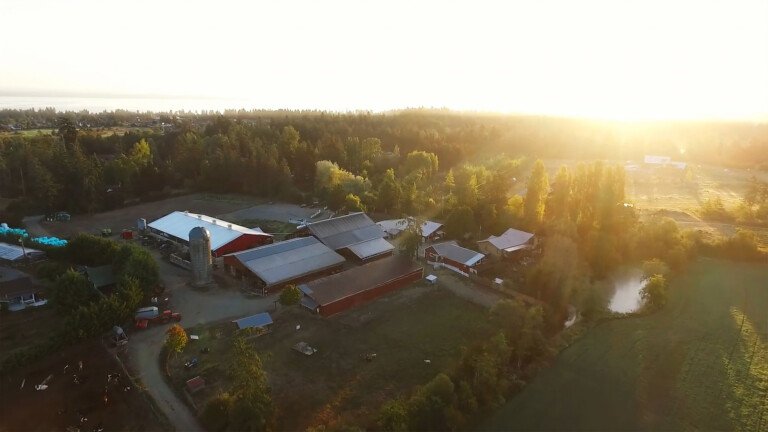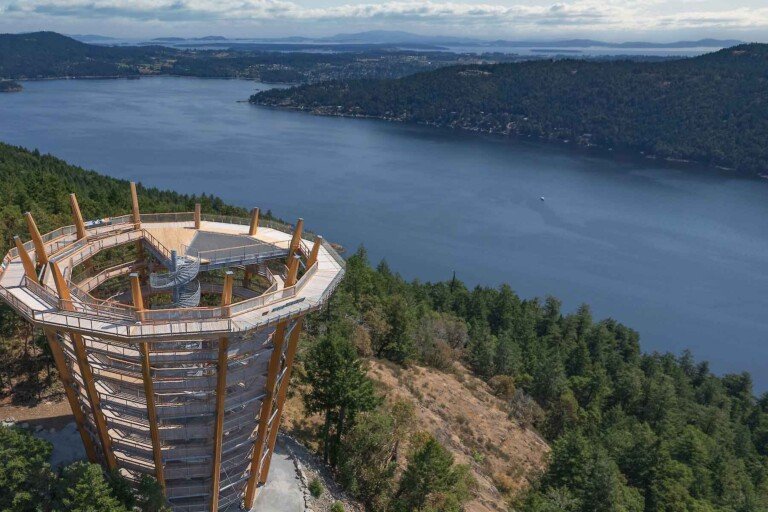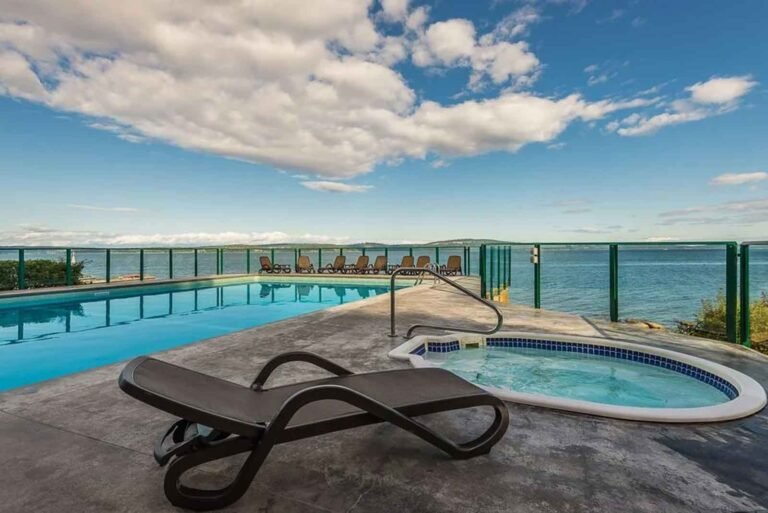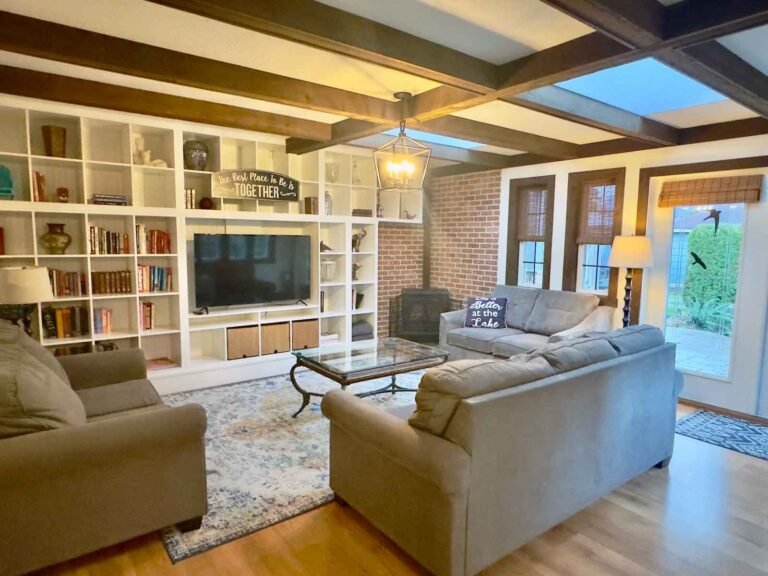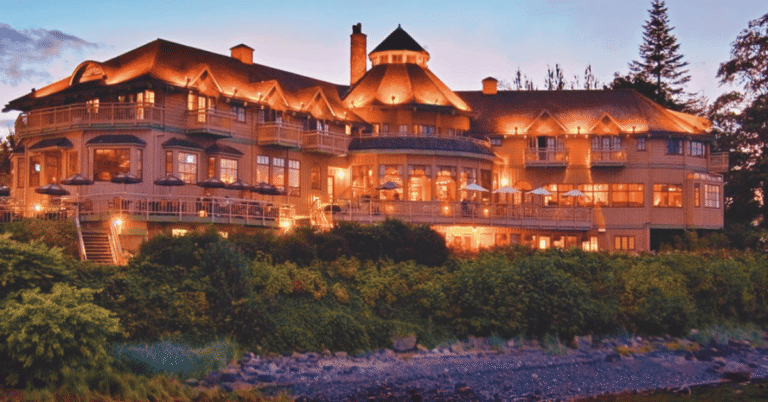Commence this exciting seven to fourteen day trip in the lively and bustling metropolis of Vancouver, with its wonderful array of public gardens, parks and beaches. One of the most desirable cities on the planet to explore, Vancouver is awash with outdoor possibilities, from the famous Stanley Park to the infamous Wreck Beach. Once you’ve had your fill of art, shopping and fine dining, and have explored what the city has to offer, travel south and board a BC Ferry at Tsawwassen for the relaxing 90-minute scenic ride to Vancouver Island.
In the capital city of Victoria, you’ll discover the Victorian’s love for the natural world in the profusion of gardens, parks and hanging flower baskets, where totem poles stand as a proud reminder of the Native heritage, and the Royal BC Museum displays a world-class repository of historical and Native artifacts.
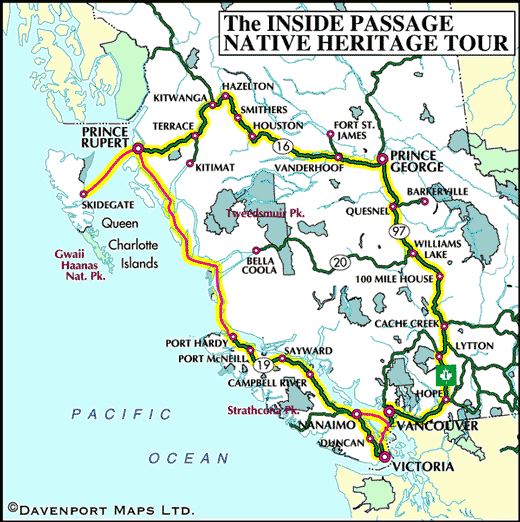
Cross the Malahat Ridge north of Victoria, and travel through the lush, rolling Cowichan and Chemainus Valleys, with this pastoral atmosphere continuing as you make your way north towards Nanaimo and Parksville. As you drive the island highway, its always a treat to look across the Strait of Georgia at landmarks on the mainland, as the spires of the Coast Mountains rise on the eastern horizon.
The farther north you head towards Courtenay and Campbell River, however, the more the peaks and glaciers of the island’s ranges vie for equal attention, principally the imposing Comox Glacier, Forbidden Plateau, and Mount Washington. Interesting stops along the North Island Highway include a short side trip to Sayward, a small coastal settlement on Kelsey Bay, and Port McNeill. From here, ferries run to nearby Cormorant and Malcolm Islands, and the towns of Alert Bay and Sointula, located respectively on each island. The U’mista Cultural Centre in Alert Bay, an inspiring Kwakwaka’wakw museum, examines cultural origins and potlatch traditions.
Get ready to travel through the protected waters of British Columbia’s central and northern coastline, and the 507-km Inside Passage route plied by cruise ships en route to Alaska. BC Ferries’ may not rival the QE ll in size, but is majestic enough to carry freight trailers, family sedans, recreational vehicles, motorcycles, and touring bicycles.
Passengers boarding in Port Hardy for the trip to Prince Rupert include the usual manifest of adventure-hungry world travellers you’d expect to find boarding a ferry in British Columbia, bolstered by a contingent of tree planters, depending on the season. By the conclusion of the journey, you’ll probably be on nodding, if not full-blown speaking, terms with many of your fellow passengers. Aside from the short stretch of open ocean between Vancouver Island and Rivers Inlet, where the Central Coast archipelago begins, the route north to Prince Rupert leads through a narrow maze of channels, passes, and reaches. Snow and ice coat the peaks of the mountains, and their shoulders plunge to the tideline. So rugged is most of this coast that if you were exploring here by kayak, you’d be challenged to find a welcoming landing site. Passengers should keep their eyes peeled for a whale or dolphin in Queen Charlotte Sound. With a bit of luck, you might even see a white-coated Kermode bear on Princess Royal Island’s lengthy shoreline.
Disembark at Prince Rupert, the gateway to pristine wilderness, nestled up under the Alaska panhandle. Witness the legacy of oral history, archaeological discoveries and unique artifacts that depict ten thousand years of northwest coast history at the Museum of Northern BC, or visit BC’s oldest surviving salmon cannery, now designated a National Historic Site.
After exploring the town, board another ferry (summer) for the hauntingly beautiful Queen Charlotte Islands (Haida Gwaii), and learn about the fascinating culture of the Haida people, or visit the Gwaii Haanas National Park and Naikoon Provincial Park.
Venture westwards along Highway 16 through the Skeena River Valley to Terrace, nestled within a forest amidst the Coast Mountain Range. Host to a myriad of outdoor activities, visitors should break out their hiking boots and fishin’ pole, and keep their eyes peeled for the elusive ‘Great Spirit Bear” – the white Kermode bear.
Stop for totem poles at the small village of Kitwanga and Kitwancool, to see what are reputed to be the oldest and finest examples of totem poles in the world. Admire the Hazelton Mountains and the ‘Ksan Historical Village and Museum in Hazelton, with its seven decorated tribal houses fronted with several totems that stand silently on the banks of the Skeena and Bulkley Rivers.
In the picturesque Bulkley Valley, Smithers is known as Little Switzerland, offering great summer outdoor recreation, and some of the best snowmobiling in British Columbia during the winter. Travelling through Houston and Vanderhoof brings you to Prince George, the hub of northern and central British Columbia, and the departure point for brave souls heading up the lonely Alaska Highway. Prince George sits between two mountain ranges on a dry plateau at the confluence of the Nechako and Fraser Rivers. For those who get their thrills under the open sky, Prince George is a paradise. Several parks and heritage trails are close by, and literally thousands of lakes and rivers beckon you and your rod, canoe, boat and backpack.
Southbound on the Cariboo Highway 97, you’ll follow the old Cariboo Wagon Road of the 1860s, which led eager prospectors northwards on the great Cariboo Gold Rush, arriving in the town of Quesnel, where you can soak up the rich history of the Gold Rush era or try your hand at a little gold panning. Take a side trip to rediscover gold country in the legendary and historic gold rush town of Barkerville, 88 kilometres east of Quesnel. Billy Barker found lots of gold here in 1862, whereupon the town became the largest city north of San Fransisco; then it became a ghost town; and now it’s an exciting place of great interest to visitors.
Next up is Williams Lake, set in the heart of the Frontier, amid lakes and rolling ranchland. Williams Lake has been the focal point and service centre for the ranches of the Cariboo and Chilcotin regions since the turn of the century, and is home to the famous Williams Lake Stampede, held in early July.
Check out the 11-metre Kharu cross-country racing skis, accompanied by a pair of 9-metre poles, outside the Information Centre in 100 Mile House, the self-professed International Nordic Skiing Capital. Stop at the gold rush town of Cache Creek and visit Hat Creek Ranch, and the 1862 roadhouse that served the teams and passengers of the B.C. Express Stage Line that travelled the original Cariboo Wagon Road.
Continue your journey to Lytton, located where the green waters of the Thompson River meet the brown, silt-laden rushing waters of the mighty Fraser River. Lytton is perhaps best known as the “Rafting Capital of Canada” – numerous first-class commercial rafting companies guide visitors through the white waters of these adventurous river routes. Lytton was also on the path taken by hardy prospectors who made there way north to the gold fields. Gold rush history and native culture is evident in the different buildings and activities, such as Remembrance Day Pow Wow. Definitely a destination of unique and exciting adventures! Want a closer look at Hell’s Gate? Take the airtram for breathtaking views of the Fraser River as it roars through this famous gorge.
On your way back to Vancouver, visitors will want to spend several days exploring the lush Fraser Valley. The pretty little town of Hope holds great appeal for outdoor adventurers. Kakwa Provincial Park and Protected Area is nearby, as is Coquihalla Canyon Provincial Recreation area, and not far away is E.C. Manning Provincial Park, with more lakes and hiking trails. The local joke here is that no matter which way you are going, the rest of B.C. is “beyond Hope”.
After a hectic day of sightseeing, relax and rejuvenate the soul in Harrison Hot Springs. Called the “Spa of Canada”, Harrison Hot Springs is a resort town with recreation and health at the forefront.
Complete your circle tour with a stop at Chilliwack, Cultus Lake, Abbotsford, Langley and Fort Langley.
Approximate Distance: 2,000 Km
Approximate Duration: 7 to 14 days
Towns on or near this Route


